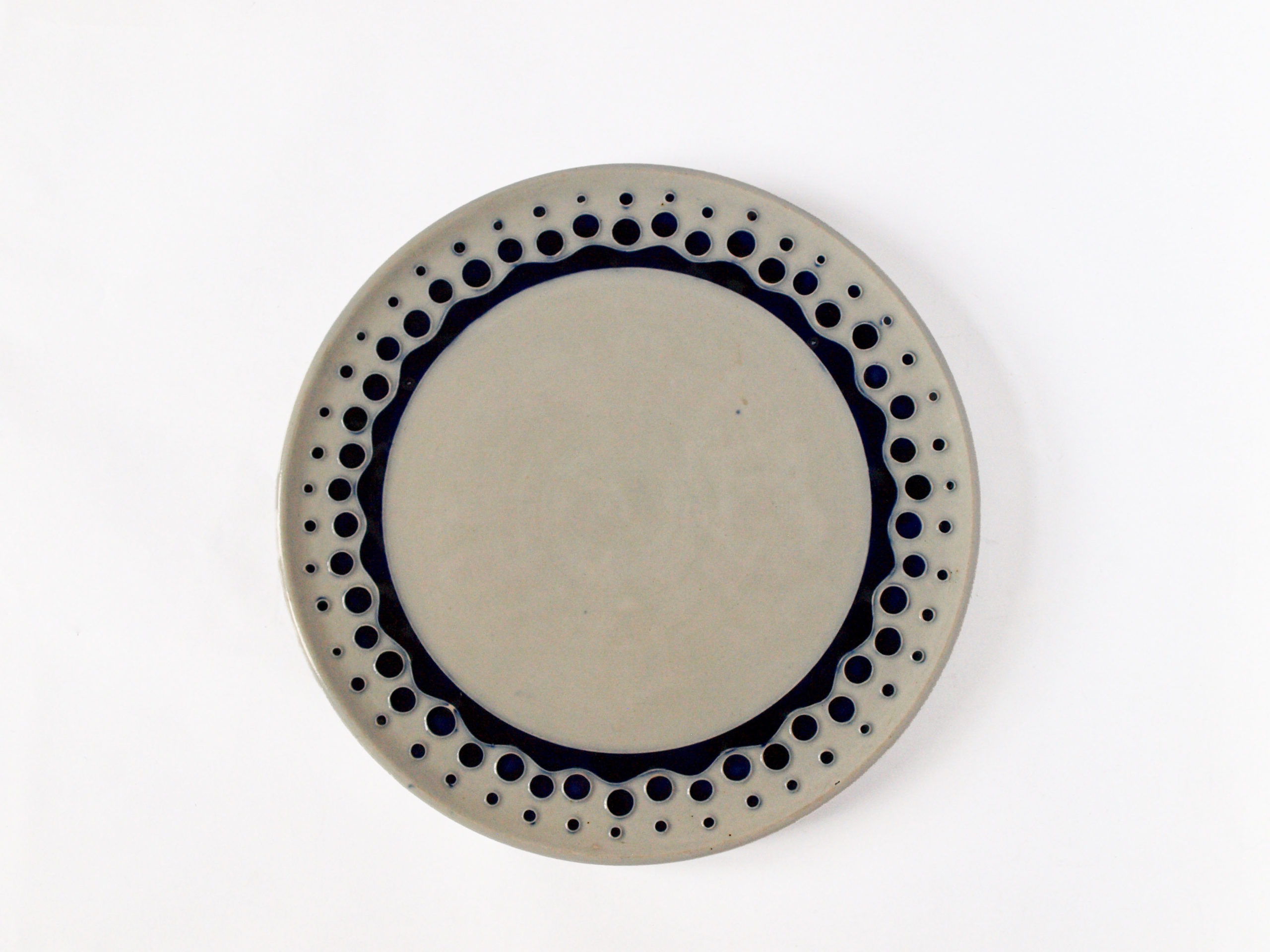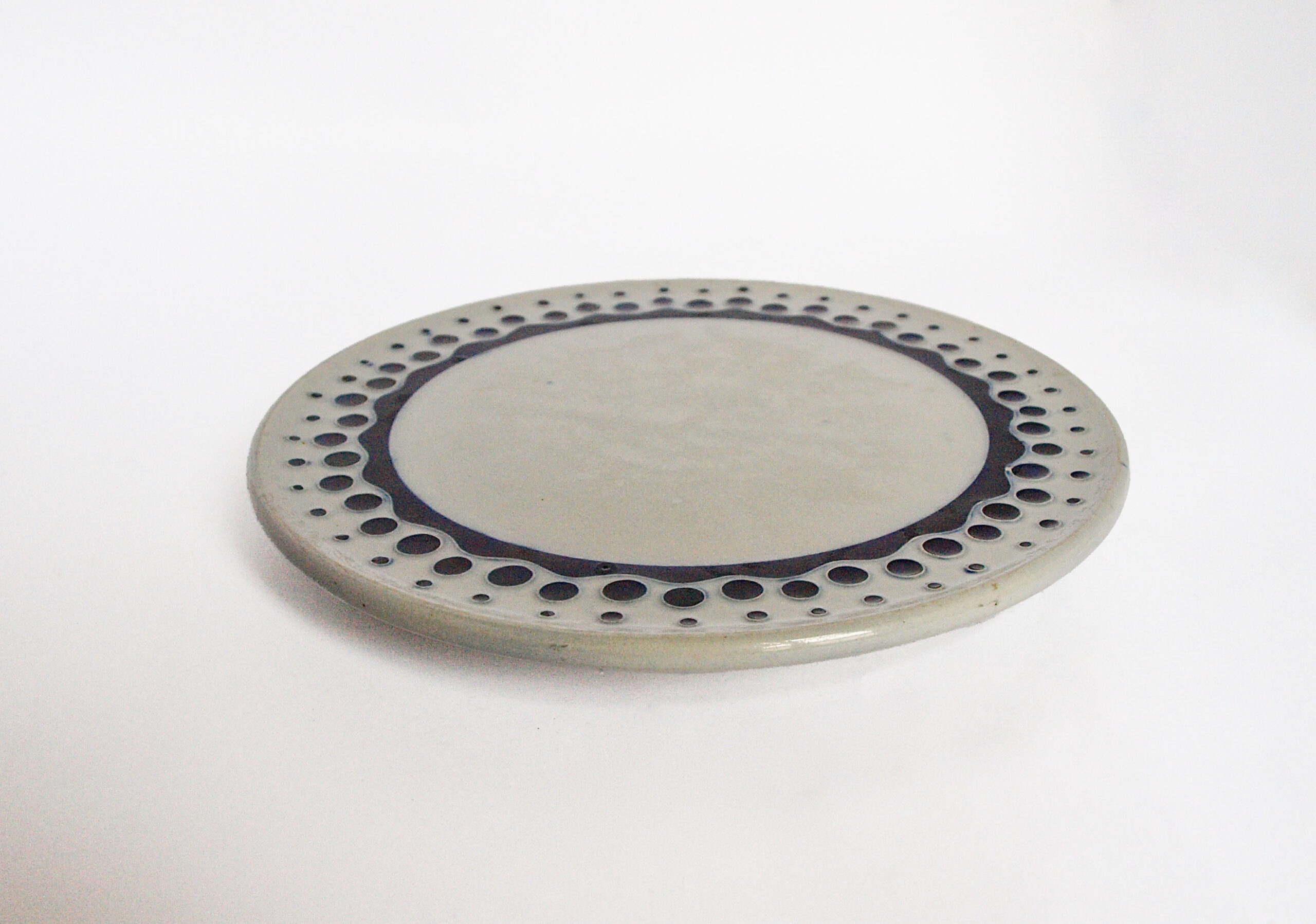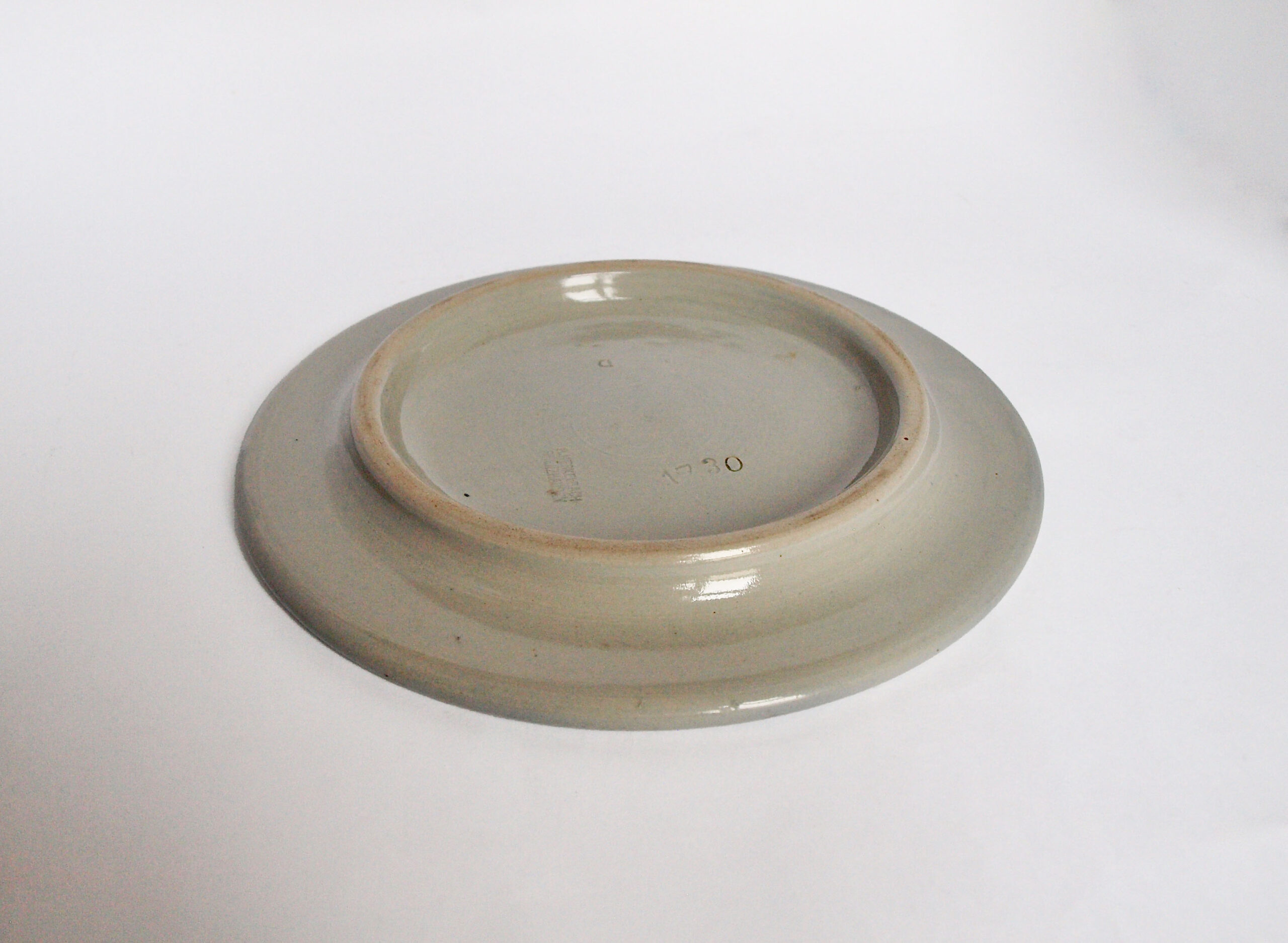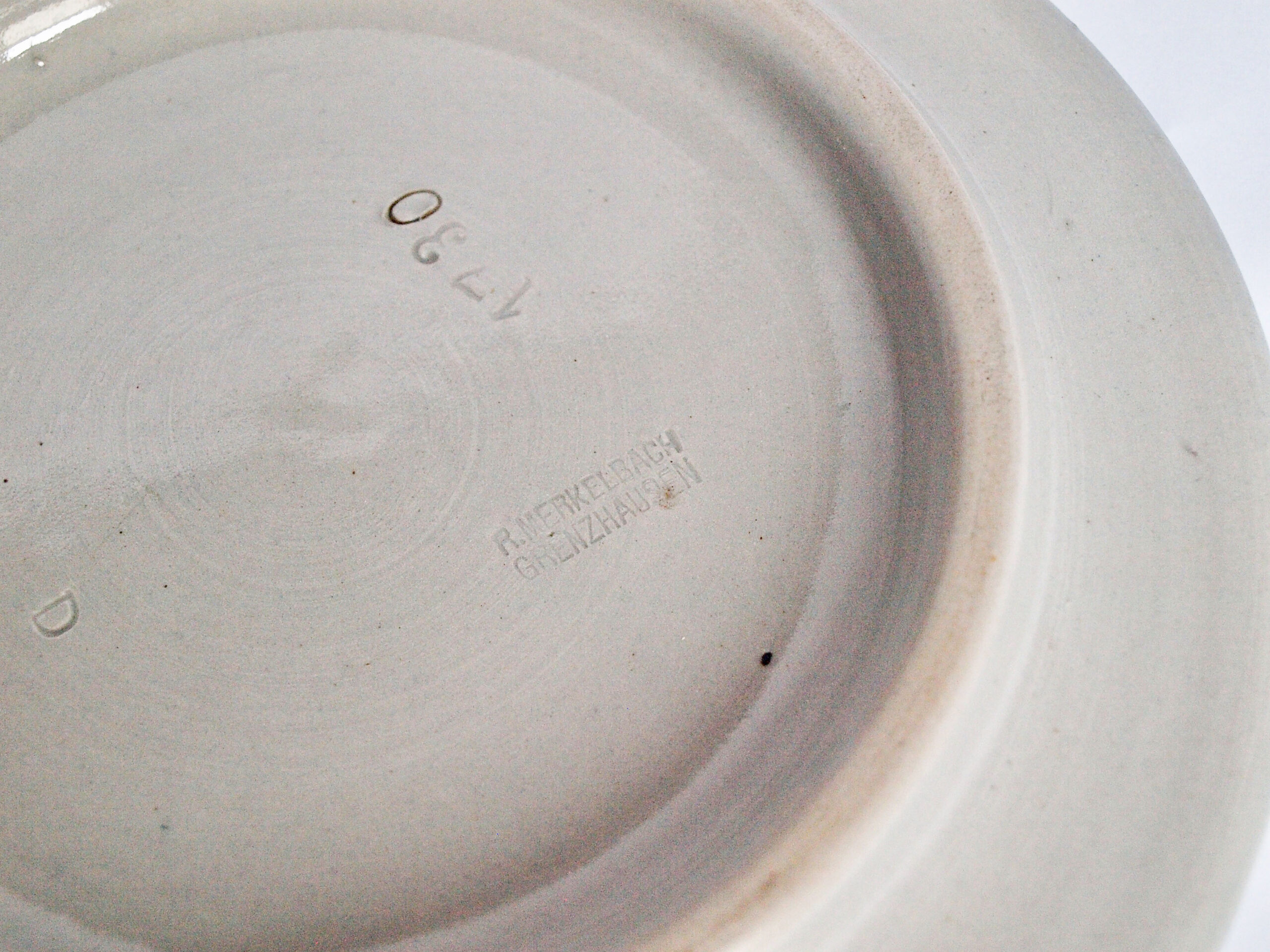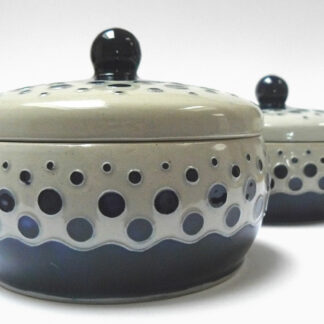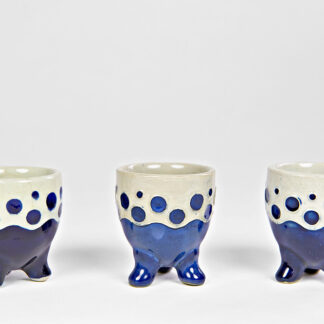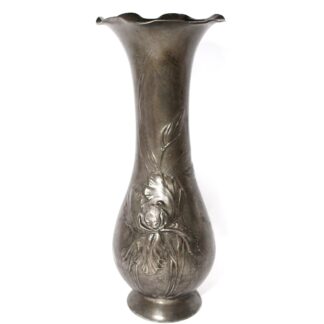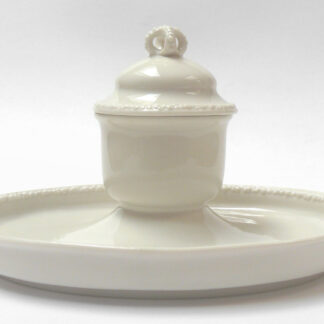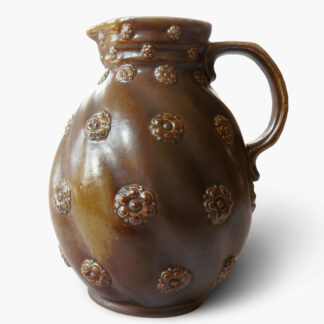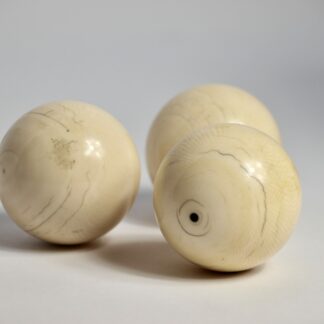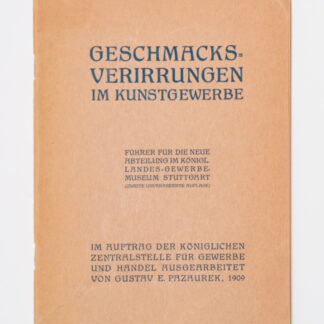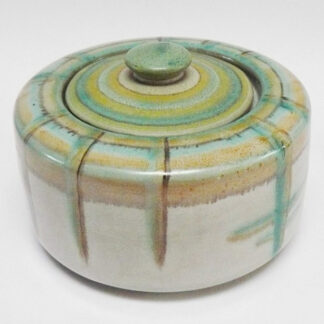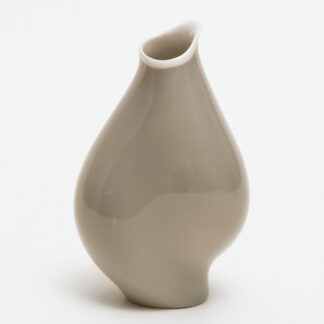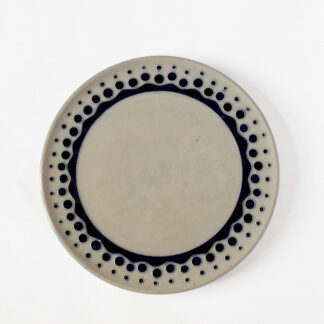Description
Richard Riemerschmid (1868-1957) ranks among the most important artists of Art Nouveau in Munich. He was one of the founders of the “Vereinigte Werkstätten für Kunst im Handwerk” (United Workshops for Art in Handicraft) in Munich in 1897 as well as of the “Deutscher Werkbund” (German Association of Craftsmen) in 1907. Apart from that, Riemerschmid was also head of the School of Applied Arts in Munich (1912-1914), judge for the “Deutsches Warenbuch” in 1915 – a co-published catalogue by the “Deutscher Werkbund” and the “Dürerbund” – as well as professor and head of the “Kölner Werkschulen” (Cologne Academy of Fine and Applied Arts) from 1926 to 1931. Apart from being an architect, he is most renowned for his progressive handicraft designs and is regarded one of the most influential designers of early 20th century Germany. His designs are very much influenced by the English Arts & Crafts Movement.
Around 1900, Riemerschmid started experimenting with ceramics, especially with porcelain stoneware – a material that like no other fascinated many other artists at the time like Theo Schmuz-Baudiß (1859-1942), Jakob J. Scharvogel (1854-1938) or Alfred W. Finch (1854-1930). Riemerschmid designed mostly stoneware in cooperation with the manufactory R. Merkelbach, founded in 1845 in Grenzhausen/Westerwald, Germany, which was closely linked to the Bavarian market since the early 1870s, yet at around 1900 was in a financial as well as artistic crisis. Riemerschmid’s designs now not only contributed to the much-needed new orientation of the manufactory but at the same time modernized pottery as a craft which had a longstanding tradition in the region. The material itself, the top-quality Westerwald clay, just met all of Riemerschmid’s requirements. It not only represented the centuries-old tradition of pottery but was suitable for industrial production while the individual characteristics of material and potter remained visible in every single piece.
This plate is a piece of Riemerschmid’s tableware series which he designed after his very successful mustard pot with tin lid for R. Merkelbach in 1902, model no. 1730. Only in the years from 1902 to 1905 Riemerschmid added additional pieces to the series like a butter dish, a milkbowl, an egg cup and this plate. The plate offered here is in perfect museum condition!
For further reading
Nerdinger, Winfried: Richard Riemerschmid. Vom Jugendstil zum Werkbund. Werke und Dokumente, München 1982.

